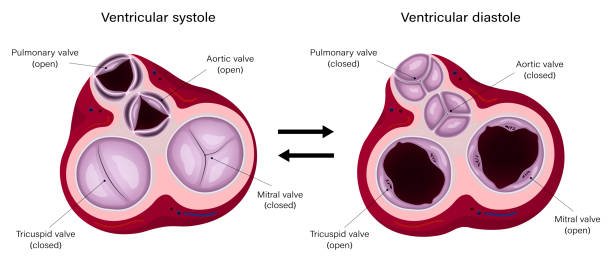
Low Diastolic Blood Pressure May Lead to Aortic Valve Insufficiency! Read the Full List of Causes, Treatments and Symptoms
Nancy was often out of breath when she coughed recently. When she checked her blood pressure and found that her diastolic blood pressure was extremely low, she rushed to see a doctor. She was unexpectedly found to have aortic valve insufficiency.
It turns out that low diastolic blood pressure is actually related to aortic valve insufficiency! ? What problems will aortic valve insufficiency cause? Will valve replacement be a permanent solution?
The role of the aortic valve
However, aortic valve insufficiency often has no obvious symptoms. Only some patients may occasionally become short of breath when their diastolic blood pressure is extremely low (less than 60mmHg), their physical strength gradually deteriorates, and they sometimes feel dizzy when measuring their blood pressure. Or chest tightness only makes you alert.
The so-called aortic valve is located at the junction of the left ventricle and the aorta. Its function is that when the left ventricle contracts to pump oxygenated blood into the aorta, the aortic valve opens to allow blood to flow into the aorta and contracts in the left ventricle. Close it at all times to prevent blood from flowing backwards. Once aortic valve insufficiency (Aortic regurgitation) or valve stenosis occurs, it may cause poor blood circulation or blood reflux, increasing the burden on the heart.
In order to supply the blood needs of various organs of the human body, in the long run, the blood volume of the left ventricle may exceed the normal range and form compensatory cardiac hypertrophy. Some patients may even evolve into heart failure. Even valve replacement surgery cannot restore the myocardium to its original state. The degree of contraction was such that in the end the only chance of survival was to receive a heart transplant.
4 causes of aortic valve insufficiency
In addition to rheumatic heart disease, which is the main cause of aortic valve insufficiency, there are also the following causes of aortic valve insufficiency:
- Bacterial infections
- Natural aging
- Congenital valve structural abnormalities
- Long-term hypertension

Symptoms of aortic valve insufficiency: diastolic blood pressure is too low, seek medical attention immediately
Symptoms are not obvious when the valve is slightly damaged. Many people will have almost no symptoms in the early stages. However, if the valve damage worsens, patients may experience the following symptoms:
- Occasional heart palpitations or difficulty breathing
- Headache
- Dizziness
- Coughing and wheezing
- Heart murmur
- Angina pectoris
- Increased heart rate
- Heart failure
When you or your relatives or friends meet any of the above symptoms, especially if the systolic blood pressure is normal but the diastolic blood pressure is extremely low, you should be highly suspicious of aortic insufficiency and seek medical examination immediately.
The survival rate of artificial valve replacement surgery is as high as nearly 90%!
Most valve diseases (such as mitral valve prolapse) only require regular outpatient follow-up cardiac ultrasound and drug treatment if they do not affect daily life. However, if it is severe aortic valve insufficiency, surgery is required. Improvement can be achieved by valve repair or replacement; according to cardiovascular surgery, the survival rate of valve replacement surgery can be as high as more than 90%. Patients or relatives and friends may wish to take heart:
- Traditional open-heart artificial aortic valve replacement surgery
Requires an incision in the sternum to replace the valve. The surgical wound is large and there are many complications, such as stroke and kidney failure. - Catheter aortic valve replacement surgery:
The process only requires local anesthesia. The aortic valve is replaced through the catheter. The operation can be completed without incision of the sternum. The risk is low and the wound is small. The mortality rate during the operation is only 3%. It is suitable for people over 80 years old. of elderly patients.
Currently, there are two types of artificial valves available for patients undergoing aortic valve replacement:
- Mechanical valve:
It can be used for life, but it requires long-term use of anticoagulants to avoid valve embolism. However, overdosing anticoagulants will increase the patient’s risk of bleeding; underdosing may cause blood clots. - Biological tissue valve:
No need to take anticoagulant drugs, but it has a service life and needs to be replaced again after about 10 to 20 years. Suitable for women with fertility needs.












